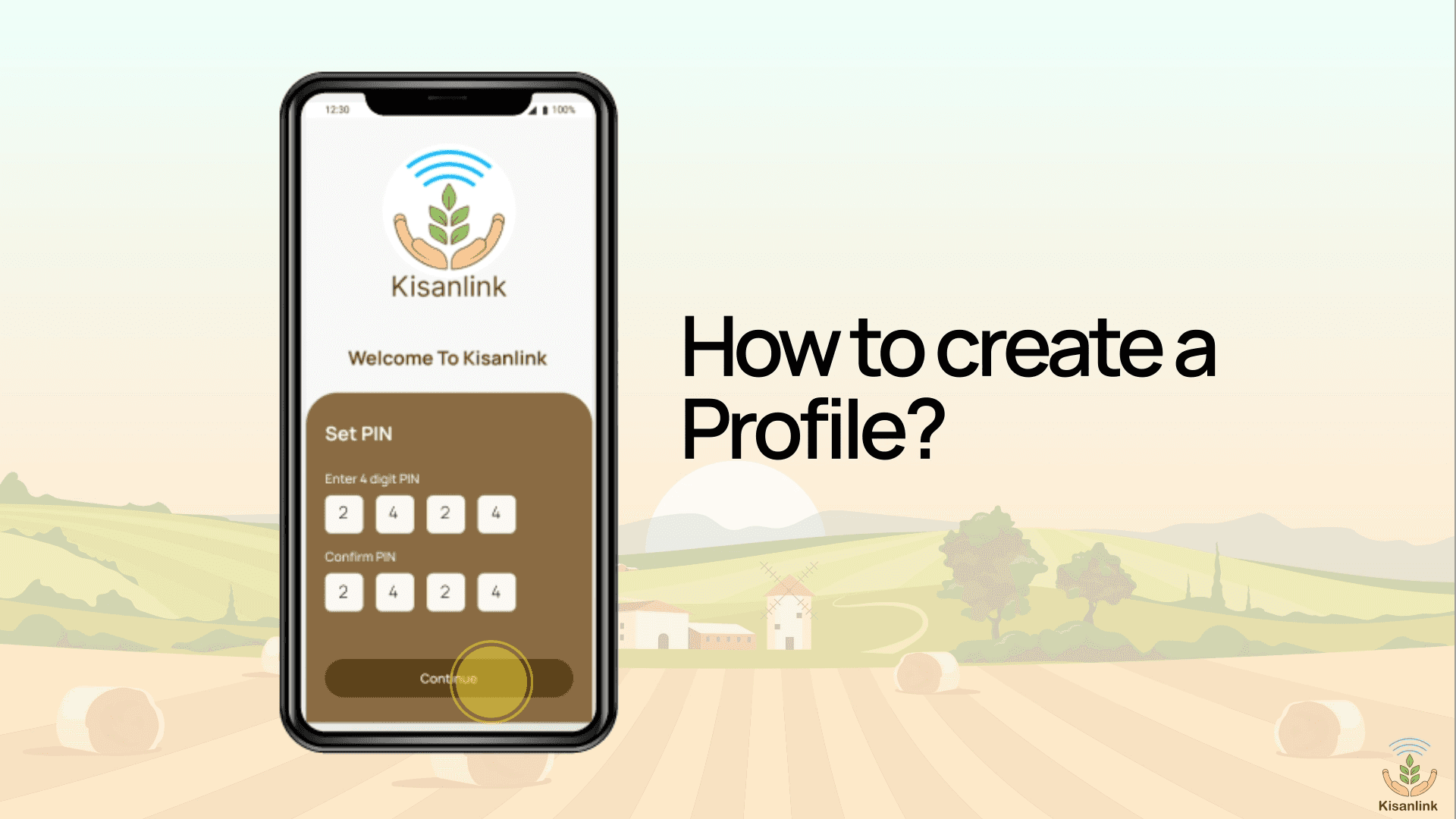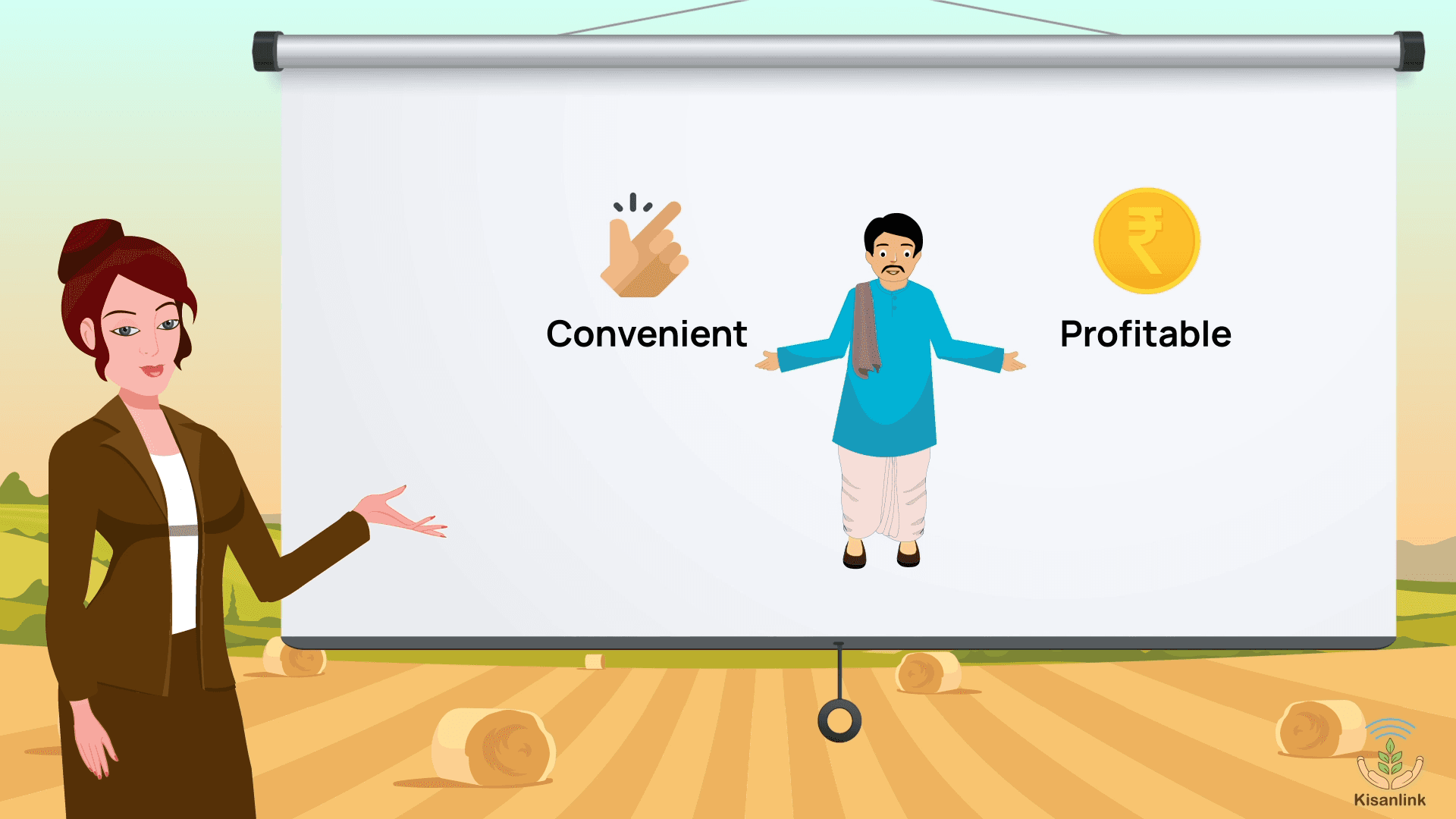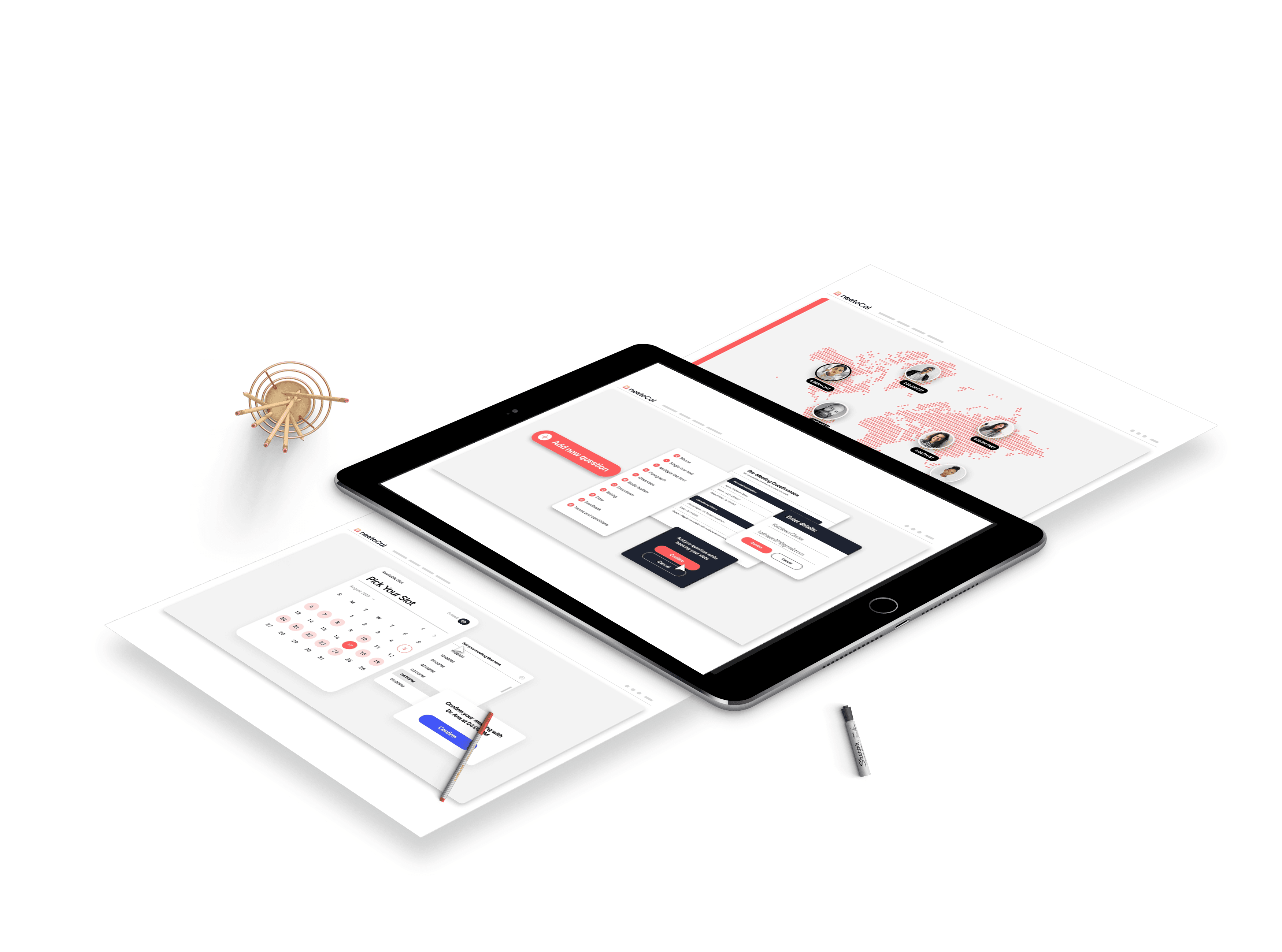Our Three Step Process
KisanLink - An E-Learning Module for a niche Farmer and Tier-3 Audience

Our Three Step Process
KisanLink - An E-Learning Module for a niche Farmer and Tier-3 Audience

Kisanlink, a team driven by passion about leveraging technology to empower farmers and revolutionize agriculture. With a deep understanding of the challenges faced by farmers and a commitment to innovation, we strive to create solutions that make farming more efficient, sustainable, and profitable.
Challenge :
Creating an e-learning module in regional languages is
a challenge that requires balancing linguistic accuracy
with cultural relevance. Translating content while
preserving clarity and context demands a deep
understanding of local nuances and idioms. Additionally,
ensuring technical compatibility for diverse devices and
literacy levels adds complexity to delivering an
effective learning experience.
Duration:
60 minutes
Solution :
We developed an engaging
e-learning video module to educate farmers on new
farming techniques by combining animated graphics with
regional language narration. Using vibrant visuals and
simple animations, they illustrated complex concepts
like irrigation methods and crop rotation in a relatable
and digestible manner. By integrating the local
language, we ensured the content resonated with the
farmers, making it easier to understand and retain the
information. This thoughtful approach bridged the gap
between modern techniques and traditional knowledge,
fostering both interest and trust.
5-Step Process for Creating an Animated E-Learning
Module in a Regional Language
-
Understand the Audience and Local Context
Begin with thorough research into the target audience's language, cultural nuances, and learning preferences. Identify the key objectives of the module and tailor the content to address their specific challenges and requirements in a relatable manner.
-
Translate and Adapt Content
Translate the app screens and textual content into the regional language with the help of native speakers or linguists to ensure accuracy and cultural sensitivity. Adapt idioms, examples, and terminologies to align with local contexts, making the information more meaningful and impactful.
-
Design Engaging Visuals
Create animated graphics that simplify complex concepts, such as farming techniques or equipment use. Use colors, symbols, and illustrations that resonate with the audience while maintaining clarity. Keep the design consistent and visually appealing to aid comprehension.
-
Integrate Regional Language Audio
Record voiceovers in the regional language, ensuring clear pronunciation and an engaging tone. Sync the audio with on-screen text and animations to create a cohesive experience. Add subtitles in the same language for added accessibility, if needed.
-
Test and Refine
Pilot the module with a small group from the target demographic to gather feedback on language, visuals, and usability. Address any gaps or confusion by refining the content, animations, or audio. Optimize for compatibility across devices to ensure seamless access for the end users.
Challenge :
Creating an e-learning module in regional languages is
a challenge that requires balancing linguistic accuracy
with cultural relevance. Translating content while
preserving clarity and context demands a deep
understanding of local nuances and idioms. Additionally,
ensuring technical compatibility for diverse devices and
literacy levels adds complexity to delivering an
effective learning experience.
Duration:
60 minutes
Solution :
We developed an engaging
e-learning video module to educate farmers on new
farming techniques by combining animated graphics with
regional language narration. Using vibrant visuals and
simple animations, they illustrated complex concepts
like irrigation methods and crop rotation in a relatable
and digestible manner. By integrating the local
language, we ensured the content resonated with the
farmers, making it easier to understand and retain the
information. This thoughtful approach bridged the gap
between modern techniques and traditional knowledge,
fostering both interest and trust.
5-Step Process for Creating an Animated E-Learning
Module in a Regional Language
-
Understand the Audience and Local Context
Begin with thorough research into the target audience's language, cultural nuances, and learning preferences. Identify the key objectives of the module and tailor the content to address their specific challenges and requirements in a relatable manner.
-
Translate and Adapt Content
Translate the app screens and textual content into the regional language with the help of native speakers or linguists to ensure accuracy and cultural sensitivity. Adapt idioms, examples, and terminologies to align with local contexts, making the information more meaningful and impactful.
-
Design Engaging Visuals
Create animated graphics that simplify complex concepts, such as farming techniques or equipment use. Use colors, symbols, and illustrations that resonate with the audience while maintaining clarity. Keep the design consistent and visually appealing to aid comprehension.
-
Integrate Regional Language Audio
Record voiceovers in the regional language, ensuring clear pronunciation and an engaging tone. Sync the audio with on-screen text and animations to create a cohesive experience. Add subtitles in the same language for added accessibility, if needed.
-
Test and Refine
Pilot the module with a small group from the target demographic to gather feedback on language, visuals, and usability. Address any gaps or confusion by refining the content, animations, or audio. Optimize for compatibility across devices to ensure seamless access for the end users.
Kisanlink, a team driven by passion about leveraging technology to empower farmers and revolutionize agriculture. With a deep understanding of the challenges faced by farmers and a commitment to innovation, we strive to create solutions that make farming more efficient, sustainable, and profitable.
Challenge :
Creating an e-learning module in regional languages is a
challenge that requires balancing linguistic accuracy with
cultural relevance. Translating content while preserving
clarity and context demands a deep understanding of local
nuances and idioms. Additionally, ensuring technical
compatibility for diverse devices and literacy levels adds
complexity to delivering an effective learning
experience.
Duration: 60
minutes
Solution :
We developed an engaging
e-learning video module to educate farmers on new farming
techniques by combining animated graphics with regional
language narration. Using vibrant visuals and simple
animations, they illustrated complex concepts like
irrigation methods and crop rotation in a relatable and
digestible manner. By integrating the local language, we
ensured the content resonated with the farmers, making it
easier to understand and retain the information. This
thoughtful approach bridged the gap between modern
techniques and traditional knowledge, fostering both
interest and trust.
5-Step Process for Creating an Animated E-Learning
Module in a Regional Language
-
Understand the Audience and Local Context
Begin with thorough research into the target audience's language, cultural nuances, and learning preferences. Identify the key objectives of the module and tailor the content to address their specific challenges and requirements in a relatable manner.
-
Translate and Adapt Content
Translate the app screens and textual content into the regional language with the help of native speakers or linguists to ensure accuracy and cultural sensitivity. Adapt idioms, examples, and terminologies to align with local contexts, making the information more meaningful and impactful.
-
Design Engaging Visuals
Create animated graphics that simplify complex concepts, such as farming techniques or equipment use. Use colors, symbols, and illustrations that resonate with the audience while maintaining clarity. Keep the design consistent and visually appealing to aid comprehension.
-
Integrate Regional Language Audio
Record voiceovers in the regional language, ensuring clear pronunciation and an engaging tone. Sync the audio with on-screen text and animations to create a cohesive experience. Add subtitles in the same language for added accessibility, if needed.
-
Test and Refine
Pilot the module with a small group from the target demographic to gather feedback on language, visuals, and usability. Address any gaps or confusion by refining the content, animations, or audio. Optimize for compatibility across devices to ensure seamless access for the end users.








Other Projects
Other Case Studies
Check our other project case studies with detailed explanations
Other Projects
Other Case Studies
Check our other project case studies with detailed explanations
Other Projects
Other Case Studies
Check our other project case studies with detailed explanations



